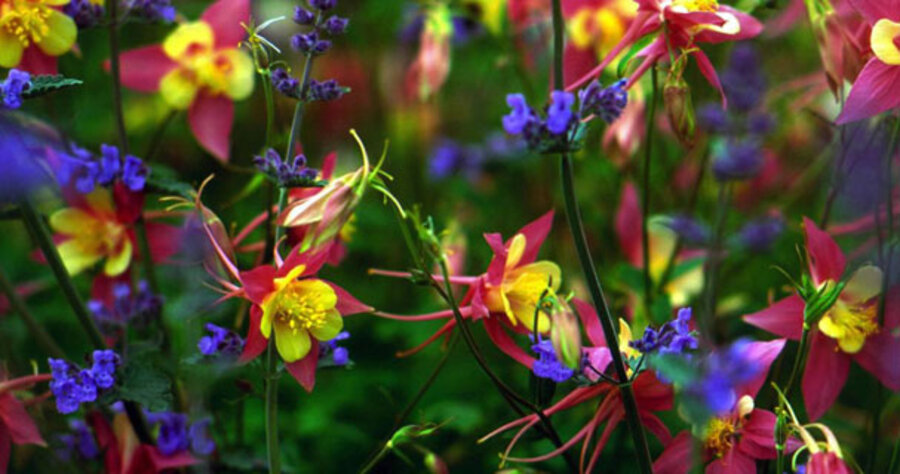Want an easy-care perennial? Try catmint.
Loading...
The word perennial comes from Latin and means “throughout the year.” It is also defined as “enduring.” Varied and versatile, perennials have been part of the landscape for centuries.
However, it was legendary British gardener Gertrude Jekyll who is credited with popularizing the perennial or herbaceous border. Her concept was to create groups of plantings that would provide color and interest from season to season, then return the following year to delight once again.
She had many perennial pets but singled out catmints as “a plant that can hardly be overpraised.”
Of course Ms. Jekyll could not have imagined the variety and colors of today’s hybrids when she was gardening in the 1880s, but she knew a good thing when she saw it. Catmints (Nepetas) generally aren’t bothered by pests or disease.
They are deer-resistant and hardy in both cold and dry climates. They don’t need fertilizing. And depending on the variety, a vigorous pruning after the first flush of bloom will result in more spikes of eye-arresting color as summer unfolds.
Even without all those attributes, catmints would be a valuable addition to almost any garden. Few plants are more versatile or dependable.
And few plants are more suitable for inexperienced gardeners because they’re reliable hard workers wherever needed. They make charming bedfellows with roses.
The frilly foliage helps hide unattractive canes without detracting from the rose blooms. And they blend well with other perennials from yarrows to ornamental grasses.
Catmints are equally happy in a rock garden, tumbling over a wall, or softening a formal border. And they can turn a ho-hum walkway into a stunning focal point.
These catmints should not be confused with their relative catnip (Nepeta cataria). Catnip can be aggressive and unruly. And it attracts unwanted visitors – and droppings – to your garden. Some older catmints also appeal to felines, but they turn their noses up at most of the newer varieties.
Nepetas are part of the mint family along with other prized perennials including lamb’s ears, bee balm, and the aromatic herbs lavender, rosemary, and thyme.
Approximately 250 species of catmints are believed to have originated in regions of Europe and Asia but only a few dozen are available in commerce today.
In 2007, the Chicago Botanic Garden concluded an eight-year study of 36 kinds of catmints to identify outstanding varieties by assessing their ornamental traits, disease and pest resistance, cultural adaptability, and winter hardiness.
According to plant evaluation manager Richard Hawke, four catmints received five-star excellence ratings based on flower production, vigor, and overall health. Nepeta ‘Six Hills Giant,’ ‘Joanna Reed,’ ‘Select Blue,’ and ‘Walker’s Low’ were the standouts:
• Six Hills Giant (36 inches by 30 inches) is one of the tallest and hardiest nepetas with deep-lavender flowers. It thrives in dry or humid conditions. Cats fancy it, but deer don’t.
• Joanna Reed (12 inches by 48 inches) is considered the tidiest of the group because stems didn’t tip over on their neighbors. It’s a good choice for containers.
• Select Blue (18 inches by 30 inches) has highly attractive lavender flowers. It tolerates drought and dry conditions, but isn’t crazy about humidity in the Deep South unless afternoon shade is provided.
• Walker’s Low was chosen as Plant of the Year by the Perennial Plant Association in 2007. The name refers to a garden in Ireland – and not height, since it can top 30 inches. It was the darkest purple in the study and will rebloom without deadheading. In addition, Walker’s Low is not attractive to deer or cats, but butterflies, bees, and hummingbirds seek it out.
Although catmints are touted as well-behaved and virtually care free, Mr. Hawke warns they will quickly decline if their feet stay wet.
“If your soil consists of heavy clay, you’ll need to add organic material to help with drainage," he says. "Catmints don’t need the extra nutrients, but they do require porous soil to thrive. Sitting in water is dangerous whether its summer or winter. The leaves begin to go a bit off-color, then the plant is gone.”
Other than soil considerations, there isn’t much to do except sit back and watch the show. No wonder gardeners from beginners to grizzled, old veterans say they are simply the cat’s meow.





